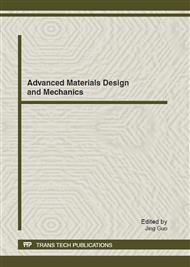p.168
p.172
p.176
p.180
p.185
p.193
p.198
p.202
p.207
Optimization of the Composite Cure Process Based on the Thermo-Kinetic Model
Abstract:
High performance composite structures produced by the processes at which the consolidation of the fibres and matrix is done at the same time as the component is shaped. Full curing schedule include a pre-warming for resin liquefaction, next apply of pressure to remove the gas bubbles, and finally consolidation of resin at elevated temperature to its full polymerization. The change in the state of the composite should be made as possible uniformly across the thick-walled products. The complexity of process control is due to unobservability of the rheological state of material in a closed volume of a mould. In this paper we propose a mathematical model of epoxy-based thick-walled composite structure curing. PDE system linking a kinetic equation of the resin cure with heat transfer equation, take into account a phase transition from liquid to gel and further to the solid state. On the basis of transient analysis of the developed model we optimize the temperature control law.
Info:
Periodical:
Pages:
185-192
Citation:
Online since:
September 2012
Authors:
Price:
Сopyright:
© 2012 Trans Tech Publications Ltd. All Rights Reserved
Share:
Citation:


